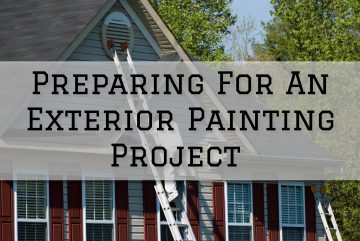Guide To Painting Your Dining Room Cabinets in Richmond, MI
Updating the look of your dining room doesn’t always require a complete renovation – sometimes, a fresh coat of paint on even as simple and unassuming as your cabinets can make a significant difference.
If you’re looking for something to guide you as you paint your dining room cabinets, here’s something perfect for you!
Here’s a Guide To Painting Your Dining Room Cabinets.
1. Do Proper Surface Preparation
In any painting project, doing proper surface preparation will always be the first thing to do before applying a fresh coat of paint onto the surface.
Proper surface preparation ensures that you’re going to be painting on a surface that is clean, even, and smooth, which in turn, will also give you favorable painting results.
In this process, you will want to:
- Clean Thoroughly: First, give your cabinets a thorough cleaning. Remove any dirt, grease, or grime using a mixture of warm water and a mild detergent. Wipe down all surfaces, inside and out, and then rinse them with clean water to remove any residue.
- Sand the Surfaces: Sanding is a crucial step in ensuring the paint adheres properly to the cabinet surfaces. You’ll want to use fine-grit sandpaper to lightly sand your cabinets. This will help remove any rough spots, imperfections, or glossy finishes. Be sure to wear a dust mask and safety goggles during this step, and remember to wipe away any dust with a tack cloth.
- Fill Imperfections: Inspect your cabinets for any holes, dents, or scratches. Use a filler to patch up these imperfections. Once the filler is dry, sand the repaired areas to make them smooth and level with the rest of the surface.
2. Choose the Right Paint and Color
Choosing the right paint is an important decision that often holds a lot of weight – ending up with the wrong kind of paint or the wrong color could change the whole trajectory of your project.
Ideally, you’d want to end up with a paint formulation specially made for cabinet painting, and the kind of surface you have with your cabinets – wooden surfaces and metal surfaces have different paint needs, so you’ll want to ask a paint professional which is the right choice for you.
There are also factors to choosing the right paint color: the kind of lighting present in the room, and the colors and elements that may already be present in the space.
These two factors are important since:
- Lighting has a significant effect on how your paint color will eventually look. Depending on the lighting present, there could be a slight difference between your expected outcome vs. how it will actually look. So, to offset this, make sure to check your chosen paint color with the lighting present in your dining room first.
- You’ll want to end up with a paint color that goes well with the existing elements and colors in your dining room space, to ensure an overall cohesive appeal – so keep this in mind!
3. Remove Your Cabinet Doors
To paint your dining room cabinets better, you’ll want to remove the doors off your cabinet frame.
You will eventually find that it’ll be hard to cover an even coat of paint on your cabinet doors without getting paint smudges all over the place, which is just the kind of mess you’re looking to avoid in your project.
To paint the area better, you should get your doors off your cabinet frame and lay them flat on a surface, where it’ll be much easier to paint them.
Just remember to keep all the necessary hardware, such as bolts and screws, so you can put them back in place when you’ve finished painting and drying them!
4. Proper Painting Techniques
Achieving a professional-looking finish requires attention to detail and the use of proper painting techniques.
Here are some techniques that may come in handy in painting your cabinets:
- Prime Before Painting: To ensure that your paint adheres well and provides an even finish, apply a coat of primer to your cabinets. Primer helps seal the wood, prevents stains from bleeding through, and promotes better paint adhesion.
- Apply Thin, Even Coats: When it’s time to paint, use a high-quality brush or foam roller for a smooth finish. Start with a thin coat of paint and work in long, even strokes. Avoid applying too much paint at once, as it can lead to drips and an uneven surface. Remember that it’s better to apply multiple thin coats than just one, thick coat.
- Let Each Coat Dry: Patience is crucial when painting cabinets. Follow the manufacturer’s recommended drying times between coats. This will help prevent smudging and ensure a flawless finish.
If you need professional help with your interior painting project, Eason Painting can help.
Our home interior painting services are available in Washington Township, Rochester, Romeo, Shelby Township, Harrison Township, and Clinton Township, MI.
Call us today at 586-465-5081 for a FREE painting estimate.
Related: Common Paint Problems And How To Prevent Them in Washington, MI
Hallway Painting Tips For Lesser Mess in Washington, MI




